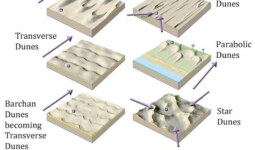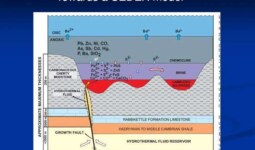Mohs hardness scale
The Mohs hardness scale is a qualitative scale used to measure the scratch resistance of various minerals or materials. It was developed by Friedrich Mohs, a German mineralogist, in 1812. The scale ranges from 1 to 10, with 1 being the softest and 10 being the hardest. Each mineral on the Mohs scale can scratch all minerals with a lower number and can be scratched by all minerals with a higher number.
Here is the list of minerals on the Mohs hardness scale:
- Talc: Easily scratched by fingernail.
- Gypsum: Can be scratched by a fingernail.
- Calcite: Can be scratched by a copper coin.
- Fluorite: Can be scratched by a steel knife.
- Apatite: Can be scratched by a glass plate.
- Orthoclase Feldspar: Can be scratched by a steel file.
- Quartz: Can scratch glass and is commonly used in glassmaking.
- Topaz: Harder than glass and can scratch it.
- Corundum: Includes gemstones like rubies and sapphires.
- Diamond: The hardest mineral on the Mohs scale, used in various industrial applications.
The Mohs Hardness Scale: An Essential Tool for Mineral Identification
The Mohs Hardness Scale is one of the simplest yet most effective methods to determine the hardness of minerals. Introduced by Friedrich Mohs in 1812, this scale has stood the test of time as a critical tool for geologists, material scientists, and gemologists. This article dives deep into the scale’s fundamentals, applications, and importance for students and professionals alike.
What Is the Mohs Hardness Scale?
The Mohs Hardness Scale measures the resistance of a mineral to being scratched. It ranks minerals on a scale from 1 to 10, where talc represents the softest material and diamond the hardest. This ordinal scale helps compare minerals in terms of their durability and scratch resistance.
Minerals on the Mohs Hardness Scale
Each level of the Mohs scale is defined by a specific mineral, as shown below:
| Mineral Image | Hardness Level | Mineral Name | Common Object Example |
|---|---|---|---|
 | 10 | Diamond | Diamond |
 | 9 | Corundum | Tungsten Carbide |
 | 8 | Topaz | Scratch Plate |
 | 7 | Quartz | Hardened Steel |
 | 6 | Orthoclase | Steel File |
 | 5 | Apatite | Glass Plate |
 | 4 | Fluorite | Knife Blade |
 | 3 | Calcite | Copper Coin |
 | 2 | Gypsum | Fingernail |
 | 1 | Talc | Fingernail |
| Hardness | Substance |
| 0.2–0.4 | Caesium, potassium, rubidium, butter |
| 0.5–0.6 | Lithium, sodium, graphite, candle wax |
| 1 | Talc |
| 1.5 | Tin, lead, ice, todorokite, wakabayashilite, idrialite, dimorphite |
| 2 | Gypsum, calcium, hardwood, dry ice (solid form of carbon dioxide) |
| 2–2.5 | Bismuth, plastic |
| 2.5 | Gold, silver, magnesium, zinc, pearl, amber, ivory, finger nail, galena, linarite, ulexite, kinoite, cylindrite |
| 2.5–3 | Copper, aluminium, chalcocite, jet |
| 3 | Calcite, thorium, dentin, chalk, brass, bronze |
| 3.5 | Platinum, adamite, strontianite, roselite, ludlamite |
| 3.5-4 | Sphalerite |
| 4 | Fluorite, iron, nickel, heazlewoodite |
| 4–4.5 | Ordinary steel |
| 4.5 | Conichalcite, duftite, colemanite, lindgrenite |
| 5 | Apatite, tooth enamel, zirconium, obsidian (volcanic glass) |
| 5-5.5 | Goethite |
| 5.5 | Cobalt, beryllium, glass, perovskite, chromite, bavenite, agrellite |
| 5.5-6 | Opal, turquoise, anatase |
| 6 | Orthoclase feldspar, titanium, uranium, rhodium |
| 6-6.5 | Rutile, pyrite |
| 6.5 | Silicon, iridium, baddeleyite, chloritoid, berlinite, cuprospinel |
| 6.5-7 | Peridot, jadeite |
| 7 | Quartz (including amethyst and citrine), porcelain, bowieite |
| 7-7.5 | Garnet |
| 7.5 | Tungsten, zircon, euclase, hambergite, grandidierite |
| 7.5-8 | Beryl (including emerald and aquamarine) |
| 8 | Topaz, cubic zirconia, spinel, hardened steel |
| 8.5 | Chromium, silicon nitride, tantalum carbide, chrysoberyl, tongbaite |
| 9 | Corundum (including ruby and sapphire), tungsten carbide, titanium nitride |
| 9–9.5 | Moissanite, silicon carbide (carborundum), tantalum carbide, zirconium carbide, beryllium carbide, titanium carbide, aluminium boride, boron carbide. |
| 9.5 – near 10 | Boron, boron nitride, rhenium diboride, titanium diboride, boron carbide |
| 10 | Diamond |
How the Mohs Scale Is Used
Field Identification of Minerals
Geologists frequently use the Mohs scale to identify minerals in the field. By testing a mineral against common materials like a knife, glass, or a fingernail, they can quickly estimate its hardness.
Evaluating Gemstone Durability
For gemologists, the Mohs scale helps determine the wear resistance of gemstones. For example, diamonds (10) are ideal for daily wear, while fluorite (4) is more prone to scratches.
Industrial Applications
Industries rely on the Mohs scale to select materials for cutting tools, abrasives, and construction purposes. Harder materials are preferred for durability in challenging environments.
Advantages of the Mohs Scale
- Simplicity: The scale is easy to use and requires minimal tools.
- Versatility: It applies to a wide range of minerals and materials.
- Practicality: Common objects like fingernails or coins can serve as reference points for hardness.
Limitations of the Mohs Scale
Although widely used, the Mohs scale has some drawbacks:
Non-Linear Scale: The difference in hardness between minerals is not proportional. For instance, diamond is much harder than corundum, but the scale assigns them adjacent values (9 and 10).
Surface-Level Assessment: It only evaluates the outer surface hardness, ignoring internal toughness.
Subjectivity in Field Tests: Results can vary based on the tester’s technique.
Complementary Hardness Tests
To address the Mohs scale’s limitations, professionals often use alternative methods, such as:
Vickers Hardness Test: Measures indentation under a specific load for precise results.
Brinell Hardness Test: Uses a steel or carbide ball to assess material resistance.
Knoop Hardness Test: Ideal for very thin materials.
Why the Mohs Hardness Scale Matters
The Mohs scale remains a cornerstone in geology and material science because of its simplicity and effectiveness. Whether identifying minerals, evaluating gemstones, or selecting materials for industrial use, the scale provides valuable insights.
For students, it’s a foundational tool to understand mineral properties, while professionals use it to make informed decisions in research and industry.
Conclusion
The Mohs Hardness Scale is a testament to the enduring relevance of simple scientific tools. By understanding how to use it effectively and recognizing its limitations, both students and professionals can make better decisions in mineral identification and material selection.
Whether you’re out in the field, working in a lab, or studying geology, the Mohs scale is a reliable companion for understanding the fascinating world of minerals.




Leave a comment